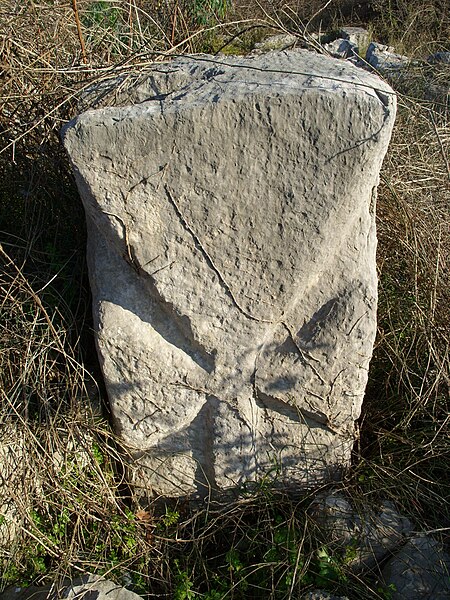Stećak is the name for monumental medieval tombstones, that lie scattered across Bosnia and Herzegovina, and the border parts of Croatia, Montenegro and Serbia. An estimated 60,000 are found within the borders of modern Bosnia and Herzegovina and the rest of 10,000 are found in what are today Croatia (4,400), Montenegro (3,500), and Serbia (2,100), at more than 3,300 odd sites with over 90% in poor condition. They are cut in a variety of recognizable stećak forms, with certain percentage being richly decorated and some individual stećci also containing inscriptions in form of epitaphs.
Although gable-shaped with a slab pedestal is not the most represented form of stećak (9%), they are usually the most elaborately and richly decorated ones.
Stećci at Radimlja necropolis
The sacral motif of deer is considered to be of Paleo-Balkan and pre-Christian origin.
Two stećci with motifs of kolo
Stećak forms, that is, shapes and dimensions of the megalithic tombstone known as stećak, is what make stećaks extremely attractive. Stećaks are mostly of large dimension and in rare cases smaller ones were cut. However, the very basic division of stećak is between lying or horizontal and standing or vertical ones, which was introduced by Dimitrije Sergejevski in 1952. The first group includes stećci in the form of a slab, a chest, a chest with a pedestal, a gable and a gable with a pedestal, while the second group includes stećci with two forms - columns and crosses. In addition to these basic forms, which have several subtypes and variants, there are also amorphous stećci, which are simplest ones and usually without any elaborate finishing decorations or inscriptions.
Stećaks are cut in many different ways, however still upon well-defined basic forms
Richly decorated Zgoća stećak
Decorations on stećak







